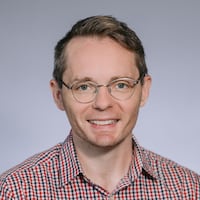The hospital association “brings strong relationships, regional leadership and a deep understanding of how violence impacts community health,” he said.
Cure Violence Global has been working with the city of Dayton since last year to develop a new violence interruption strategy and program.
Under this model, trained “violence interrupters” and outreach workers go out into the community to try to identify and mediate conflicts before they escalate into bloodshed. Workers try to develop relationships with people at high risk of violence to change their behaviors and social norms and connect them to services for housing, food, employment and education.
Cure Violence Global originally recommended that Public Health should oversee the programmatic and administrative parts of Dayton’s program. However, Public Health notified the city that it will not be able to serve as the lead oversight agency.
“Public Health is navigating a highly uncertain funding environment, with significant federal support for some of our established programs at risk,” said Health Commissioner Jennifer Wentzel.
But the Greater Dayton Area Hospital Association has committed to be in charge of the implementation and coordination of Dayton’s program. Officials say the city and the Dayton Police Department should not be heavily involved in the program so that it can gain credibility and trust with high-risk individuals.
Sarah Hackenbracht, GDAHA president and CEO, said in a statement that reducing violence will improve health outcomes across the region.
“This work aligns perfectly with our mission to promote the health and well-being of the communities we serve,” she said.
Credit: Jim Noelker
Credit: Jim Noelker
Hackenbracht said GDAHA will help identify a community-based organization to implement the model through a request for proposals process, and the not-for-profit also will monitor the implementation, progress and outcomes of the program.
Supporters say violence interruption programs use a public health approach to reduce violence, and Dayton’s initiative is expected to target violent crime hotspots.
“Workers are trained as disease control workers, similar to tuberculosis workers, and receive extensive training in methods of mediation, behavior change and norm change,” says Cure Violence Global’s readiness assessment report for Dayton.
In a statement, Cure Violence Global said that its model has been implemented in cities across the nation with a variety of agencies and organizations serving in an oversight capacity. Public Health says it will support and participate in the program as a community advisor.
Mayor Mims said the violence interruption program is one part of his peace campaign. He said other components include new efforts to teach young people conflict resolution skills, improve youth development and create young peace ambassadors.
Mims said, “The reason we’re doing this model is because this model works.”
About the Author

